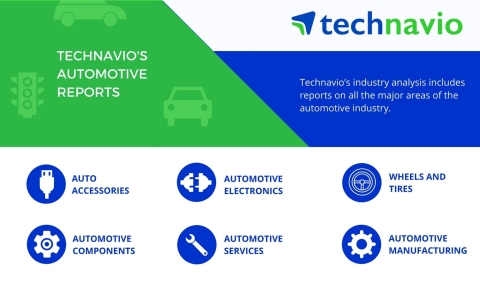Technavio’s latest market research report on the global automotive exhaust systems market provides an analysis of the most important trends expected to impact the market outlook from 2017-2021. Technavio defines an emerging trend as a factor that has the potential to significantly impact the market and contribute to its growth or decline.
This press release features multimedia. View the full release here: http://www.businesswire.com/news/home/20180105005323/en/

Technavio has published a new market research report on the global automotive exhaust systems market 2017-2021 under their automotive library. (Graphic: Business Wire)
One of the key factors resulting in the growth of the global automotive exhaust systems market is the increasing demand for vehicles in emerging countries. The passenger car segment holds the largest share of the automotive exhaust system market. An increase in the sales of passenger cars will lead to an increased demand for automotive exhaust system units.
Avail Technavio’s Year-End Special offer: Get 50% off on this report and all other reports covering industries like ICT; energy; food and beverage; healthcare and life sciences; automotive; industrial automation; education; and many more. Offer valid only from Dec 18 – Jan 7.
The top three emerging market trends driving the global automotive exhaust systems market according to Technavio research analysts are:
- Industrial shift toward selective catalytic reduction technology
- Development of high-flow automotive catalytic converter
- Increasing battery-powered electric vehicles
Looking for more information on this market? Request a free sample report
Technavio’s sample reports are free of charge and contain multiple sections of the report including the market size and forecast, drivers, challenges, trends, and more.
Industrial shift toward selective catalytic reduction technology
Stringent regulations across the world aiming at emission control have been propelling developments in exhaust gas systems. This has led to increased adoption of exhaust gas recirculation sensors. The market is experiencing a shift toward selective catalytic reduction (SCR) technology as it improves fuel efficiency by controlling NOx emissions in the tailpipe. SCR systems use a reducing agent that is injected into the exhaust gases before it moves through the SCR catalytic converter. At this stage, nitrous oxides are converted into non-toxic nitrogen gas and water vapor.
The SCR technology has been already introduced in the exhaust systems of passenger cars by OEMs such as Mercedes-Benz, BMW, and Volkswagen. Additionally, the technology is gaining traction in the commercial vehicles segment, with the implementation of Euro VI and BS VI norms. With the rollout of BS VI norms by 2019-2020 in India, the SCR technology is expected to be available in 50% of the heavy commercial vehicles by 2020-2021.
Development of high-flow automotive catalytic converter
A high-flow catalytic converter is an advanced vehicle exhaust treatment system, which limits the flow of emissions at a much faster pace than conventional automotive catalytic converters. It also increases the vehicle's performance without increasing the level of emissions. This catalytic converter is made of stainless steel outer shell that increases its durability and allows it to function in harsh climates.
According to Ganesh Subramanian, a lead analyst at Technavio for automotive components, “A high-flow catalytic converter has lesser obstacles for the exhaust gas to move to the exhaust tips. Therefore, it improves the performance of the vehicle by reducing the build-up of exhaust gas backpressure. This system assists the vehicle to achieve more power at higher rotations per minute and more torque at lower rotations per minute.”
Increasing battery-powered electric vehicles
The automotive market has been experiencing a shift toward battery-powered electric vehicles (BEV), primarily in the Americas, China, and European countries due to the increasing environmental concerns, frequent increase in fuel prices, and other factors such as the cost of purchasing and maintaining internal combustion vehicles. These factors propel the growth of BEVs and increase their sales.
“Governments across the world are also playing an important role in this shift toward battery-powered electric vehicles. To reduce carbon emissions and dependence on oil, worldwide governments of many countries have started implementing various programs. They are funding manufacturers to set up new factories, as well as customers to purchase electric vehicles,” says Ganesh.
Browse Related Reports:
- Global Agricultural Tractor Tires Market 2017-2021
- Global Commercial Vehicle Urea Tank Market 2017-2021
- Global Motorcycle Braking System Market 2017-2021
About Technavio
Technavio is a leading global technology research and advisory company. Their research and analysis focuses on emerging market trends and provides actionable insights to help businesses identify market opportunities and develop effective strategies to optimize their market positions.
With over 500 specialized analysts, Technavio’s report library consists of more than 10,000 reports and counting, covering 800 technologies, spanning 50 countries. Their client base consists of enterprises of all sizes, including more than 100 Fortune 500 companies. This growing client base relies on Technavio’s comprehensive coverage, extensive research, and actionable market insights to identify opportunities in existing and potential markets and assess their competitive positions within changing market scenarios.
If you are interested in more information, please contact our media team at media@technavio.com.
View source version on businesswire.com: http://www.businesswire.com/news/home/20180105005323/en/



















